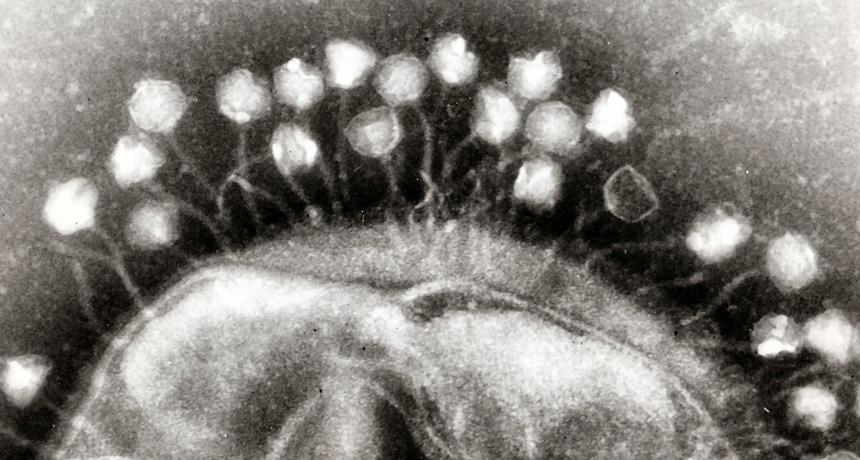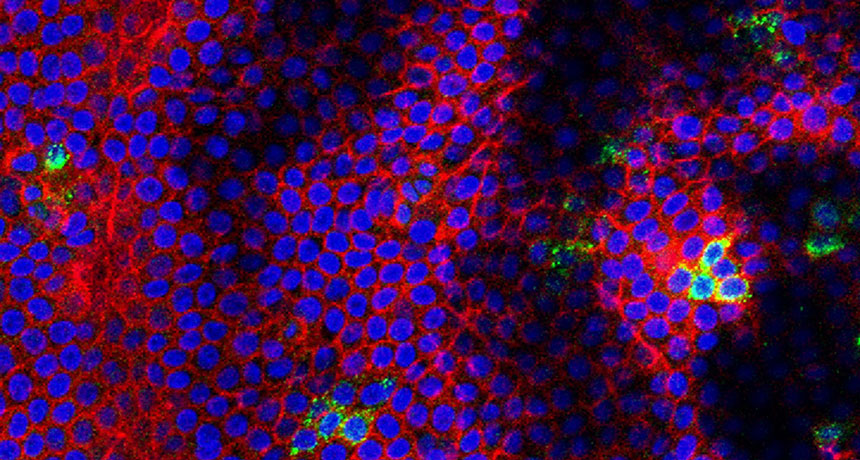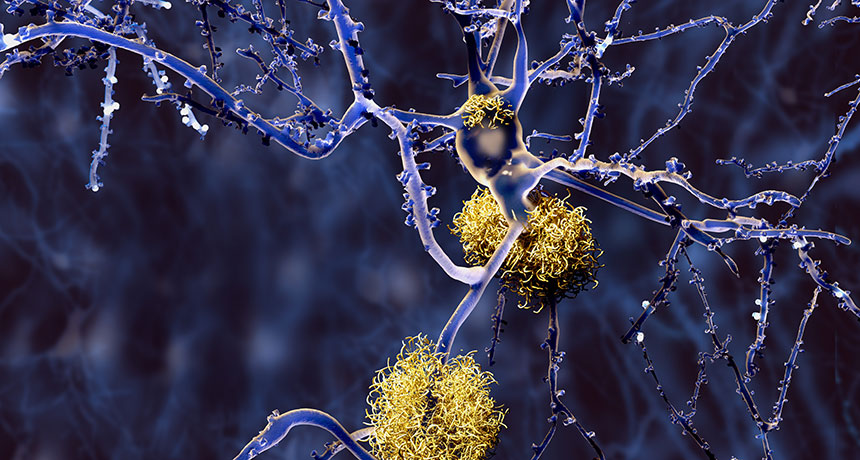Magnets with a single pole are still giving physicists the slip
Magnetic poles are seemingly inseparable: Slice a magnet in half, and you get two smaller magnets, each with its own north and south poles. But exotic magnetic particles that flout this rule may be lurking undetected, some physicists suspect.
The hunt is in full swing for these hypothetical particles known as magnetic monopoles — which possess a lone north or south pole. Now, two groups of researchers have further winnowed down the particles’ possible masses and characteristics, using data from particle accelerators and the corpses of stars.
There’s good reason to suspect magnetic monopoles are out there, some physicists suggest. The particles’ existence would explain why electric charge is quantized — why it always seems to come in integer multiples of the charge of an electron instead of a continuous range of values. As a result, magnetic monopoles are popular. “A lot of people think they should exist,” says James Pinfold, a particle physicist at the University of Alberta in Edmonton, Canada.
If even a single magnetic monopole were detected, the discovery would rejigger the foundations of physics. The equations governing electricity and magnetism are mirror images of one another, but there’s one major difference between the two phenomena. Protons and electrons carry positive and negative electric charges, respectively, but no known particle has a magnetic charge. A magnetic monopole would be the first, and if one were discovered, electricity and magnetism would finally be on equal footing.
For decades, scientists have searched fruitlessly for magnetic monopoles. Recent work at the Large Hadron Collider, located at the particle physics lab CERN in Geneva, has reinvigorated the search. Magnetic monopoles might be produced there as protons slam together at record-high energies of 13 trillion electron volts.
Unfortunately, the latest search by Pinfold and collaborators with the Monopole and Exotics Detector at the LHC, or MoEDAL (pronounced “medal”), found no magnetic monopoles, despite analyzing six times the data as the project’s previous pursuits. Still, the new research has set some of the most stringent constraints yet on how easily the hypothetical particles may interact with matter, the MoEDAL collaboration reports December 28 at arXiv.org.
Magnetic monopoles may also dwell where magnetic fields are extraordinarily strong and temperatures are high. Under these conditions, pairs of monopoles might form spontaneously. Such extreme environments can be found around a special kind of dead star known as a magnetar, and in the aftermath of collisions of heavy atomic nuclei in particle accelerators. By studying these two scenarios, physicists Arttu Rajantie and Oliver Gould, both of Imperial College London, put new constraints on monopoles’ masses, the researchers report in the Dec. 15 Physical Review Letters.
If magnetic monopoles had relatively small masses, the particles would sap the strength of magnetars’ magnetic fields. That fact suggests that the particles must be more massive than about 0.3 billion electron volts — about a third the mass of a proton — the researchers calculate. That estimate depends on another unknown property of monopoles, the strength of their magnetic charge. The particles have a minimum possible magnetic charge. A magnetic charge larger than this baseline value would correspond to a minimum mass greater than 0.3 billion electron volts.
For a monopole with twice the minimum charge, Rajantie and Gould determined that magnetic monopoles must be more massive than about 10 billion electron volts, going by data from collisions of lead nuclei in the Super Proton Synchrotron, a smaller accelerator at CERN. Studying similar collisions of lead nuclei in the LHC could improve this estimate, due to the LHC’s higher collision energies.
While other experiments have set higher monopole mass limits than the new estimates, those analyses relied on questionable theoretical assumptions, Rajantie says. “These are currently the strongest bounds on the masses of magnetic monopoles that don’t rely on assumptions” about how the particles are created, he says.
The results are “very exciting,” says theoretical physicist Kimball Milton of the University of Oklahoma in Norman, who was not involved with the research. Of course, he adds, it’s “not as exciting as if somebody actually found a magnetic monopole.”
Even if monopoles do exist, the particles might be so heavy that they can’t be produced by accelerators or cosmic processes. The only magnetic monopoles in the universe might be remnants of the Big Bang. A future incarnation of MoEDAL, located on a mountaintop instead of in an accelerator’s cavern, could look for such magnetic monopoles that sprinkle down on Earth from space, Pinfold says.




